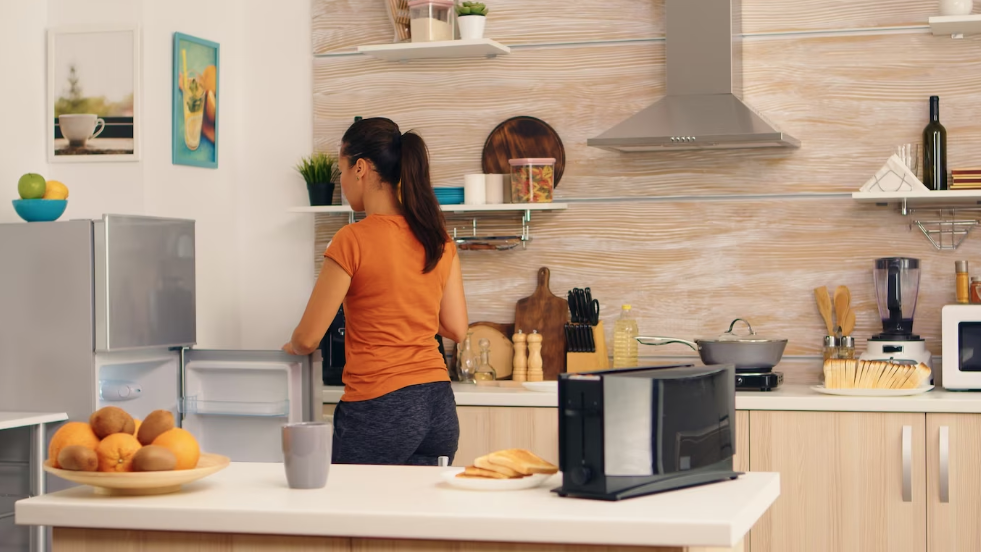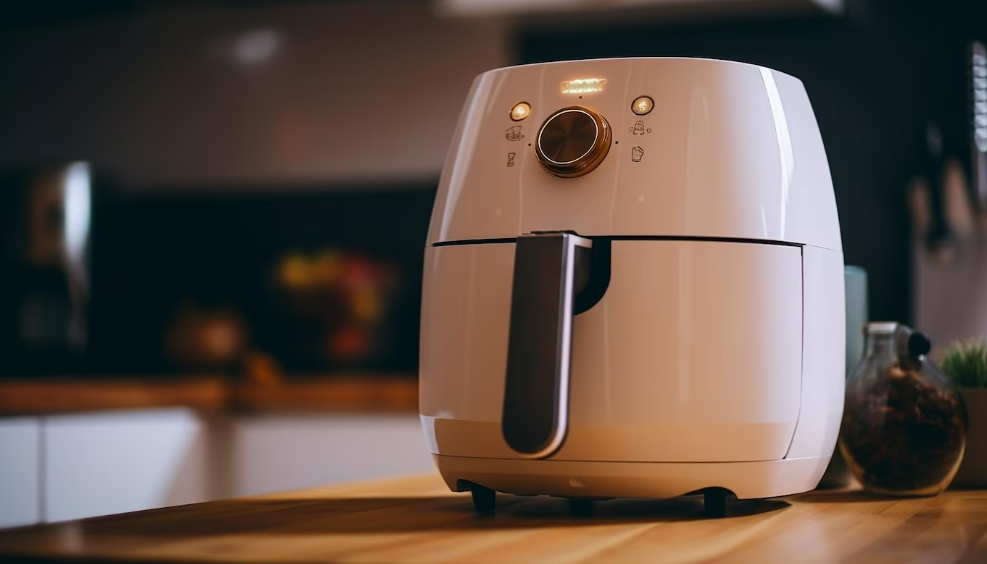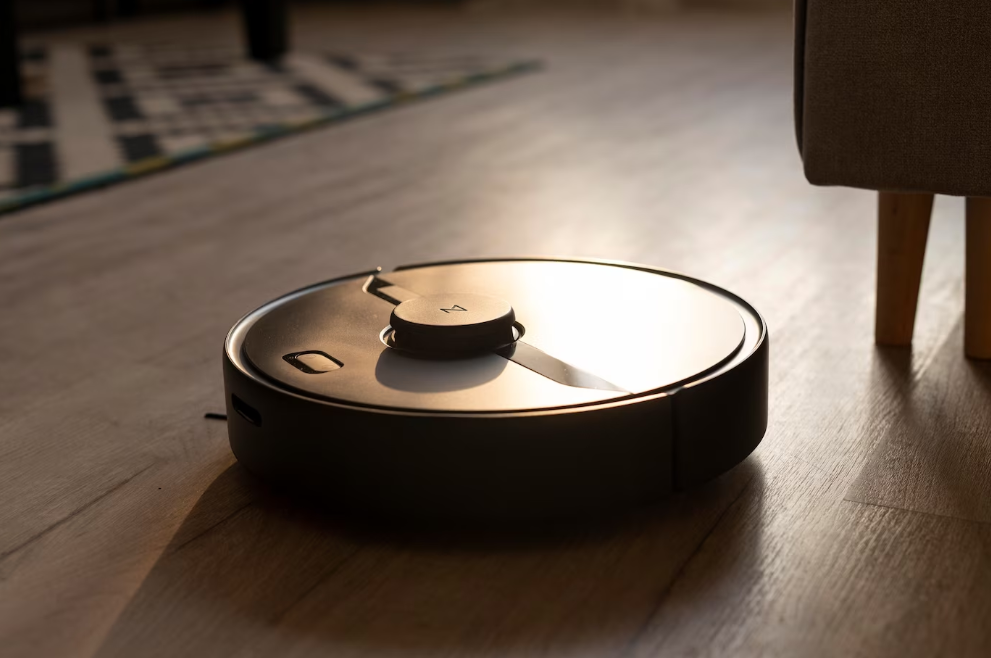As we strive to achieve a more sustainable future, we must reconsider the everyday items we use, including home appliances. An excellent place to start is by investing in eco-friendly home appliances, which can significantly reduce our carbon footprint and improve energy efficiency at home. These appliances are designed to be energy-efficient and environmentally friendly, giving you the power to live greener and promote a healthier planet.
Understanding the value and efficiency of eco-friendly home appliances is vital in this era of environmental consciousness. They represent a major step in fostering a green lifestyle. Let’s delve into these top 15 eco-friendly home appliances that can make your home more sustainable in 2023.
Induction cooktops offer an efficient method for preparing meals by using electromagnetic energy to heat pots and pans directly. Unlike traditional cooktops, they only transfer heat to cookware, eliminating wasted energy. Easy-to-control cooking temperatures and auto-switch modes make these appliances highly energy-efficient. Induction cooktops are gaining popularity not just for their technological advancement, but also for their environmental credentials. They are 84% efficient, significantly outperforming their gas counterparts at 40% and even beating electric-coil and standard smooth-top electric cooktops which clock in at 74% efficiency. This high efficiency implies less wasted energy.
They are also faster in heating food or liquids, taking only about 5.8 seconds to boil water compared to 8.3 seconds on a gas stove. This improved speed further increases energy efficiency and consequently, reduces the amount of CO2 released. The U.S. Energy Information Administration has data showing that induction cooking releases only 0.29 pounds of CO2 in the water boiling experiment, considerably less than natural gas at 1.16 pounds. This means that if your home is powered by renewable energy sources, such as solar power, induction cooking could virtually be emissions-free. Furthermore, induction cooktops improve indoor air quality due to requiring less overall heat, resulting in lower levels of effluent.
The refrigerator, often the biggest energy consumer in the kitchen, can be made significantly more efficient with modern designs. Modern energy-efficient refrigerators, often marked with the Energy Star label, set the bar high for energy conservation in the kitchen. These intelligently organized compact models ensure generous storage without excessive energy usage. Energy Star-certified refrigerators are approximately 9% more energy-efficient than the federal minimum energy efficiency standard. By recycling your old refrigerator responsibly and replacing it with an ENERGY STAR-certified model, you could save nearly $230 over the refrigerator’s 12-year life expectancy.
High performance features, such as efficient compressors that generate less heat, improved insulation for maintaining cold temperatures, and smart temperature and defrost mechanisms, make these refrigerators even more energy-efficient. Some models even include coolers, often referred to as wine coolers or beverage centers, that are up to 20% more efficient than the standard. This transition to an energy-efficient refrigerator not only cuts down on your energy consumption and costs but also contributes to a healthier environment by reducing CO2 emissions.

An electric composter brings sustainability to your kitchen waste management. This appliance takes food scraps and converts them into nutrient-rich soil for your garden or indoor plants. By transforming waste into something useful, you’re minimizing landfill contribution and enriching your green spaces at home. Home kitchens produce a significant share of food waste, with the US accounting for 37.2% of the total. Electric composters provide a sustainable solution to manage this waste, transforming it into valuable compost for your garden and indoor plants, thereby reducing the amount of waste that ends up in landfills.
Consider this: every pound of food waste produces around 3.8 pounds of carbon-equivalent greenhouse gas emissions when discarded in a landfill. The average household disposes of roughly 4.32 pounds of food per day. Over a year, this waste could generate approximately 5,548 pounds of carbon-equivalent greenhouse gases, most of which can be avoided with the use of an electric composter. Visualize the impact if everyone took up composting. Research from the University of Indiana suggests that if all US residents composted their food waste, the reduction in greenhouse gas emissions would be comparable to removing 7.8 million cars from the roads.
Dishwashers are a staple in many homes, but they can be significant water wasters. Energy-efficient models, often labeled with WaterSense certification, drastically cut water consumption. An Energy Star-certified dishwasher uses less than 3.5 gallons of water per cycle, compared to the 10 gallons used by older models. Over a year, the water savings could add up to 1,000 gallons, substantially decreasing water bills and reducing the energy required for water treatment and heating. These dishwashers are also more energy-efficient, consuming about 20% less energy than standard models. With the average American family running approximately 300 loads per year, this can result in considerable savings. Over the product’s lifetime, an Energy Star-certified dishwasher can save about $550 in energy costs. This represents a reduction of around 200 pounds in CO2 emissions annually, according to U.S. Energy Information Administration data. Further practices such as running full loads, using liquid detergents, and air-drying dishes instead of using the heat dry cycle can enhance these savings even more.

The air fryer has emerged as a multi-purpose, energy-efficient appliance. It can replace several other appliances, from toasters to deep fryers. They have surged in popularity due to their ability to replicate the taste and texture of deep-fried food but with significantly less oil, making meals healthier. They also have a smaller carbon footprint compared to conventional ovens, and their cooking process doesn’t raise room temperatures, reducing AC usage. On average, an air fryer uses up to 50% less energy than a standard oven. Given that an oven uses around 2 kWh per hour, the energy saving is substantial. On average, a standard oven would require about 300 hours of cooking time per year, but an air fryer could accomplish the same tasks in under 150 hours. Moreover, because air fryers heat up rapidly, they also save time and further reduce energy consumption, providing an additional layer of environmental and cost benefits.

Laundry appliances are among the most energy-intensive appliances in the home. However, efficient electric dryers can help mitigate their environmental impact. An Energy Star-certified electric dryer uses about 20% less energy than conventional models, which equates to roughly 200 kWh saved per year. This translates to approximately 300 pounds less CO2 emitted annually and about $24 saved on energy bills, according to the U.S. Energy Information Administration. Additionally, many efficient dryers now come with moisture sensors that prevent over-drying, further conserving energy and extending the life of your clothes. Some models also have a “cool down” phase that uses the residual heat to finish the drying cycle, providing additional energy savings.
Electric kettles offer a more energy-efficient way to boil water compared to stovetops. Models with an automatic switch-off feature help to prevent unnecessary energy consumption, making them an ideal choice for the green household. When compared to heating water on the stove or in a microwave, an electric kettle uses less energy and is quicker. When it comes to energy efficiency, an electric kettle clearly outperforms both microwaves and electric burners. In various tests, electric kettles have shown an impressive efficiency of roughly 80%, significantly surpassing the 70% efficiency of stovetops and the meager 50% efficiency of microwaves. Therefore, based on your usage and the devices at your disposal, an electric kettle could be a much more eco-friendly choice.
While single-use coffee pod machines may be convenient, they generate a lot of plastic waste. Instead, manual coffee makers or reusable coffee pods are more environmentally friendly alternatives. These options allow you to enjoy your daily brew while minimizing your impact on the environment. Fortunately, there are now sustainable coffee makers available that make the brewing process more energy efficient and less wasteful.
A traditional drip coffee maker uses between 900 to 1200 watts of energy during brewing, while a sustainable model uses only about 600 watts. Many sustainable coffee makers also come with reusable filters, reducing the waste associated with disposable paper filters. Moreover, some models have an “auto-off” feature that shuts down the coffee maker after a certain period, further saving energy.

Toasters, another ubiquitous appliance in many homes, also have the potential to be energy savers when chosen thoughtfully. Eco-friendly toasters are designed to consume less energy without compromising on their functionality. A noteworthy feature to look for in toasters to enhance energy efficiency is the absence of long bread slots. Long slots often lead to energy wastage when not filled completely. Opting for a toaster with one or two bread slice slots and a temperature control feature would cater to the needs of most families, offering a delicious breakfast routine without excess energy consumption. By choosing such energy-efficient models, you contribute to a more sustainable lifestyle and environment.
Shifting the focus to another common kitchen appliance, rice cookers offer an environmentally friendly alternative to traditional stovetop cooking methods. They’re designed to use less energy, which helps reduce overall power consumption. Beyond their energy efficiency, rice cookers are also adept at preventing overcooking, which ensures the preservation of taste and nutrients in your rice. Furthermore, models that are Energy Star-certified have been recognized for their energy-saving capabilities. To further contribute to health and safety, consider choosing a model with a stainless steel bowl, which helps avoid the harmful chemicals commonly found in Teflon-coated cookware. Also, it’s beneficial to pick a rice cooker that matches the size of your family’s regular servings to prevent unnecessary energy usage.
While blenders don’t typically use a lot of energy, every bit counts when it comes to sustainability. Blenders, particularly energy-efficient models, use less power compared to large food processors. They’re a great choice for various cooking tasks, from pureeing ingredients to making smoothies. Models with settings that automatically stop once ingredients are sufficiently processed cut down on energy waste. Moreover, many of these energy-efficient models come with added features designed to reduce energy wastage, such as settings that automatically stop the machine once the ingredients have been sufficiently processed. By incorporating such appliances into your kitchen, you not only conserve energy but also contribute to sustainable living.

The SodaStream is an excellent addition to an eco-friendly kitchen. It lets you make your own carbonated drinks, saving on the cost and waste of store-bought beverages. By reducing plastic bottles and aluminum cans, you’re significantly decreasing your carbon footprint. They use no electricity, which means they produce zero CO2 emissions from energy use. Moreover, one SodaStream carbonator can replace up to 120 single-use plastic bottles, reducing plastic waste. According to SodaStream, their machines help save 3,700 single-use plastic bottles on average over four years. This not only reduces waste but also energy and resources used in the production and transportation of bottled beverages.
Space heaters offer localized heating and cooling, reducing the need to control the temperature of the entire house. Many models come with thermostats and sleep timers, ensuring they only operate when necessary, saving energy and money. Space heaters can be energy-intensive, with standard models consuming up to 1.5 kWh of electricity per hour. Energy Star-certified space heaters, however, use around 30% less energy. If you operate a heater for a few hours each day during the winter season, an energy-efficient space heater could result in noticeable annual energy savings. This could lead to a substantial decrease in your household’s carbon footprint and also some modest savings on your annual energy expenses.
Outdoor lighting can be a significant energy drain in many homes. However, solar-powered lights can provide a sustainable alternative. They charge during the day and provide illumination at night without any additional energy usage. Being a renewable form of lighting, solar-powered lights are an excellent way to reduce your environmental footprint. They do not emit any CO2, as they aren’t reliant on traditional forms of electricity generation that often involve burning fossil fuels. As such, they’re a great option for those looking to reduce their carbon emissions and do their part in combating climate change. Furthermore, solar lights offer financial benefits as well. Since they do not require any electricity to function once installed, they effectively cost nothing to operate. This can result in notable savings on energy bills over time.
Robotic vacuum cleaners are an excellent example of how technology can ease our lives and be sustainable. They are programmed to clean specific spaces, reducing unnecessary energy use. Some models are even equipped with energy-efficient features such as scheduled cleaning and automatic return to the charging station, making them a smart choice for a green home. A standard robotic vacuum cleaner uses about 0.04 kWh of electricity per cleaning cycle. Energy-efficient models use about 20% less energy, translating to savings of approximately 2.92 kWh over a year if you run your robotic vacuum cleaner once a day.

Several brands have made significant strides in sustainability, producing eco-friendly home appliances that are both efficient and reliable. Some of these include:
Energy Star: This is not a brand per se, but a certification given to appliances that meet specific energy efficiency guidelines. Products with this label, from any brand, are reliable eco-friendly options.
Samsung: This well-known brand produces a range of Energy Star-certified home appliances, including refrigerators, washers, and dryers.
Bosch: Bosch offers energy-efficient options in home appliances including dishwashers and induction cooktops. Their commitment to sustainability is demonstrated in their product design and manufacturing processes.
Whirlpool: Whirlpool appliances, including their refrigerators and dishwashers, are often Energy Star-certified. They’re dedicated to making products that have a minimal impact on the environment.
LG: Known globally, LG’s appliance portfolio includes a wide range of energy-efficient appliances. From refrigerators to dryers, many of their appliances come with the Energy Star rating, showing their commitment to energy conservation and efficiency.
Miele: Miele stands out for its high-quality and durable appliances. Sustainability is at the core of their design process. The brand offers a variety of eco-friendly appliances, including energy-efficient dishwashers and washing machines.
Dyson: Dyson is renowned for its innovative appliances that blend technology and energy efficiency. Their range of vacuum cleaners and fans are designed to consume less energy, thus reducing the environmental impact.
GE Appliances: This brand has a reputation for manufacturing eco-friendly appliances. Many of their products, like refrigerators and dishwashers, are Energy Star-certified. GE Appliances also pursues sustainable manufacturing processes, contributing to a smaller carbon footprint.
Panasonic: Panasonic is another leading brand offering a diverse range of energy-efficient home appliances. They emphasize reducing CO2 emissions and water consumption in their product line, demonstrating their commitment to sustainability.
Frigidaire: Frigidaire produces a range of energy-efficient appliances, from air conditioners to refrigerators. Their products often have the Energy Star certification, showing their dedication to energy conservation.
On August 16, 2022, a significant stride was made in the promotion of clean energy when President Biden enacted the notable Inflation Reduction Act (IRA). The law earmarks a substantial $391 billion to bolster clean energy and mitigate climate change, with $8.8 billion designated for rebates on home energy efficiency and electrification initiatives.
These rebate programs aim to assist U.S. households in saving on energy costs, transitioning to clean energy systems, and enhancing energy efficiency while concurrently decreasing indoor and outdoor air pollution. It’s predicted by the U.S. Department of Energy (DOE) that these unprecedented consumer rebates for energy efficiency and electrification can generate annual savings for households of up to $1 billion. Here are a few appliances that could be eligible:
While these potential rebates are exciting, it’s important to remember that the details are not yet available. Check with your State Energy Offices or their websites for updates as the rebate program is implemented.
Adopting eco-friendly home appliances is a worthwhile investment towards a greener lifestyle. The technology available today makes it possible to maintain a comfortable home environment without harming the environment. It’s about making small but significant changes, and transitioning to eco-friendly appliances is one such change. Beyond the financial savings, these appliances enable us to reduce our carbon footprint and work towards a sustainable future.
There are various eco-friendly home appliances, including induction cooktops, efficient refrigerators, electric composters, and energy-efficient dishwashers, among others.
The amount varies by appliance, but for example, induction cooktops are 84% energy efficient compared to 40% for gas cooktops.
Possible appliances include ENERGY STAR heat pump clothes dryers, ENERGY STAR electric stoves or ovens, induction cooktops, and smart technology appliances.
Stay a while and read more posts like this
Energy Efficiency, Green Living
Imagine reducing your home energy consumption by half. Picture your energy bill dropping significantly every month. It’s not a pipe dream in 2023....
Energy Efficiency, Solar Energy, Solar Energy Basics, Solar Financing
Many people find themselves wondering, “How many solar panels do I need to power my house?”. In this era of increasing environmental awareness and...
Energy Efficiency, Future of Solar, Solar Energy, Solar Financing, Solar Technology
Indeed, solar panels can help you save money, reduce your carbon footprint, and protect you from astronomical electricity bills. However, before the actual...